Creative operations, or creative ops, is an emerging discipline that empowers creative teams to succeed in ever-changing, ever more challenging business environments.
Now more than ever, creative teams are asked to produce more assets faster while simultaneously staying true to brand and compliance requirements. Creative operations gives creative teams the ability to thread the needle and satisfy these competing priorities.
Because creative ops includes a wide range of principles, best practices, and methodologies, it doesn’t fall into established categories or frameworks. More than mere project management, creative operations connects people, methodologies, tools, and principles across the entirety of the creative process.
All that might sound a bit daunting, but at its heart, creative ops is about setting up and running a complete environment that allows a creative team to satisfy an increasing need for content while doing the job they were hired to do: be creative. No matter the business case or compliance requirements, implementing creative ops will level up your creative team.
What is creative operations?
Creative operations is a comprehensive discipline encompassing the principles, methodologies, and best practices for managing the end-to-end creative process. It involves understanding the entire lifecycle of creative projects from conception to delivery.
A skilled creative operations manager knows how to use a wide range of tools to optimize each stage of the creative process for maximum efficiency and effectiveness. That means mastery of the tools and techniques involved in project management, resource allocation, workflow optimization, technology implementation, and performance measurement.
Finally, the discipline of creative ops involves synchronizing the people (creatives, stakeholders, and others) involved in building creative assets.
Only by combining the management of people, tools, principles, and processes under a single discipline can creative teams operate successfully under pressure to create more content than ever.
Why is creative operations important?
Christina Carr, Head of Marketing Program Management at Atlassian, put it best: "It's the business side of marketing and creative.”
Creative operations is crucial for maximizing the efficiency of creative teams. By bringing structure, processes, tools, and metrics to the creative workflow, it optimizes timeliness, quality, capacity, and costs.
Setting up creative operations
Setting up effective creative operations starts with understanding and planning for the specific creative environment your team operates in. When considering these requirements, start with the most basic, high-level items:
- Are you working with internal or external clients?
- What types of campaigns are you building assets to support?
- What content types are you building?
- What compliance requirements (brand and regulatory) must be satisfied?
Only once you have clearly outlined the creative environment can you begin fleshing out creative operations.
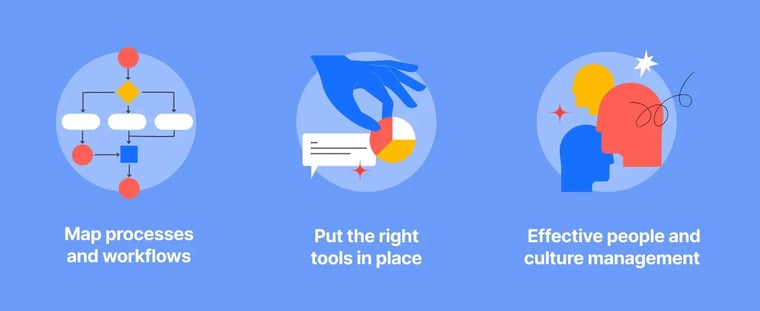
- Map processes and workflows: Make sure that every workflow and process maps clearly onto the environment you outlined. Eliminate extraneous processes; ensure that each requirement of your creative environment is accounted for. Developing new processes also happens here.
- Put tools in place: The processes and workflows in the previous step will lack consistency (or won’t get off the ground in the first place) without tools to support them. This might include review and approval tools, compliance tools, and project management tools.
- Manage the people and culture: An often-overlooked aspect of creative operations is the fundamental task of managing the people and culture. Setting clear expectations about processes and holding teams accountable to the creative environment is a crucial part of creative operations.
Running creative operations
As we look closer at creative operations, we see how running creative ops affects efficiency and success. From project intake to final delivery, each stage plays a pivotal role in optimizing creative processes:
- Resource management: Allocating and managing the human resources needed for producing creative assets across all projects. This involves scheduling and managing creatives, such as designers, writers, and video producers.
- Workflow optimization: Refining the processes and workflows that creative teams use to produce and deliver their work, which might involve implementing project management tools, establishing best practices, and optimizing collaboration.
- Quality control: Refining and enforcing processes to ensure all assets adhere to required quality, brand, and compliance requirements. These procedures are established when setting up creative operations, while the review and approval process happens in the course of managing creative projects.
- Status updates: Timely progress updates both within the team and to stakeholders, as well as proactive answers to questions and high-level information for stakeholders and senior management.
- Collaboration and communication: Facilitating effective communication and collaboration within the creative team and with other departments or stakeholders, such as marketing, sales, or external clients.
- Analytics and reporting: Measuring and analyzing the performance of creative projects and initiatives to inform future strategies and improvements.
- Creative asset storage and distribution: Organizing and storing completed creative assets and readying for distribution for project stakeholders.
Managing creative projects
Setting up and running creative operations only matters insofar as creative projects are built and delivered. Managing creative projects is the final link.
- Project intake: Collecting, evaluating, and prioritizing project ideas from across the organization, then turning these inputs into clear plans and deliverables for the creative team.
- Creative brief: Following a document outlining project deliverables to guide visual design, copywriting, and website assets.
- Project management: Managing timelines, deliverables, and milestones of creative projects to ensure they meet deadlines and objectives.
- Creative review and approval: The systematic method used to evaluate and approve creative materials before they are finalized. The process typically involves multiple stakeholders, including creative teams, clients, managers, and legal or compliance teams.
- Revisions management: The process of revising versions of assets in production, including proposing revised action plans.
- Final delivery: Presenting the final project to clients or internal stakeholders.
Creative operations management vs. creative project management

Creative operations extend beyond project management, requiring a strategic mindset and organizational skills.
Creative operations management and creative project management are both essential components of managing creative work, but they focus on different things and have fundamentally different purposes.
Creative operations management focuses on efficiency and effectiveness throughout the entire creative process, managing the resources and workflows across the entire team.
In this discipline, tools and methodologies are optimized for both productivity and quality. Typically, this means standardization and automation so that repetitive tasks aren’t a resource drain while also tracking metrics and KPIs to ensure performance.
Creative project management focuses on the planning, execution, and delivery of individual creative projects. At its core, it defines project scope, objectives, timeline and budgets, sets up coordination with stakeholders, clients, and team members, and schedules tasks, and responsibilities.
Creative operations empowers the success of the entire creative team across all processes. Project management gets the work done by zeroing in on the successful delivery of individual projects.
Both are critical parts of managing creative work, but they are different. One is not better than the other; indeed, in many organizations creative operations managers are responsible for creative operations and project management.
How do creative operations and project management work together?
While creative operations and project management go hand in hand, project management is a significant part of the creative operations role. Together, they ensure projects are delivered on time, within budget, and meet the team’s objectives. Creative ops sets up the discipline and structure, while project management sets up each individual project for success.
What’s driving the growth of creative operations
Pioneering brands Macy's and Prudential were among the first to introduce a position for “Vice President of Creative Operations.” Since then, interest in creative operations has skyrocketed.
Over the past decade, creative operations has evolved into a mainstream function for many organizations — it’s not just a “nice-to-have” anymore.
In fact, as of March 2024, there are over 100,000 creative operations jobs available on Indeed.com.

Why the rising trend? Here are seven reasons why.
1. Increased demand for creative content
Competition for buyer attention has only increased, and content delivery has become an arms race. Brands feel pressure to offer creative assets for every channel at all times, and digital distribution has resulted in an explosion of demand for creative content.
In this environment, creative teams are under more pressure than ever to create more assets than ever, and there’s no sign the pace will slacken. Creative operations is mandatory for creative teams who intend to operate successfully and produce content at the required scale.
2. Balancing speed vs. control
In creative teams, the push for speed conflicts with the need for control, creating a tug-of-war. Speed advocates emphasize quick delivery of creative projects, while control advocates stay focused on the quality of the project. As these two sides conflict, the project is at a standstill.
Finding a balance between these opposing forces is crucial for teams to deliver high-quality work efficiently. The happy medium is a creative ops system that emphasizes both speed and control over a project.
Even if creative teams find a way to create content at scale and satisfy demand, the fast-paced nature of digital content consumption means that each asset has a shorter shelf life than in the past. That means creative teams must not only deliver more content, they have to do it faster.
Shorter timeframes don’t give creative teams the ability to sacrifice quality or compromise on brand and regulatory compliance. If content quality drops — or regulatory requirements aren’t met — brand value is at stake.
The creative ops discipline is growing because it offers creative teams the ability to thrive in this increasingly difficult environment.
3. Managing complex processes
Even the most brief description of the creative process drives home how complex a single project can be for a creative team. Managing project intake, creative briefs, review and approval, quality control, compliance, status updates, revision, and delivery only becomes more difficult at scale.
A single campaign might have dozens of deliverables, each moving through the entire creative process. Adding industry-specific compliance requirements (such as HIPAA for healthcare) raises the stakes — and the complexity for creative teams.
Because creative ops looks at resource allocation, project management, people management, optimal tool usage, and process, it offers a combined arms approach to managing these complexities. Automation happens at each stage of the creative process in a way that clearly segues to the following stage. Tools, people, and processes work together across projects, rather than operating in independent silos.
4. Eliminating process inefficiencies
Process inefficiencies are the result of inconsistency, failure to automate, lack of tools, and just plain bad processes. It’s easy to chalk these up to random events or low team productivity because solving for inefficiencies across both tools and processes requires the complete discipline of creative operations.
Creative operations applies across the entire creative process, across all projects, so instead of solving for inefficiencies project by project (itself an inefficient approach!), implementing creative ops solves for inefficiencies at scale.
It maps the correct processes onto the right pieces of your creative environment. It automates the right tasks with the right tools at the right times — perhaps by creating automatic stakeholder notifications during the review and approval stage. It manages people and culture to drive quality outcomes in the most efficient way.
5. Ensuring marketing compliance
If your organization is subject to regulatory compliance, you understand how important rigorous processes are for ensuring that compliance. Using the right compliance tools helps support these processes, but creative ops goes beyond a single tool, ensuring that the processes (as well as the tools) are part of a larger, cohesive effort across projects.
6. Quality control
Brands cannot afford to sacrifice quality. More scrutiny than ever is applied to creative assets by both customers and regulatory bodies, and brands run massive risks putting content into the world at anything less than maximum quality.
Creative operations allow teams to meet and maintain the highest quality bar by applying principles and methodologies across the entire creative process. Rather than flirting with inconsistency from project to project, implementing and running creative operations means teams can confidently deliver quality assets.
7. Managing creative team performance
Managing creative team performance builds a culture of achievement while also supporting creative work. This sometimes feels like controlling a subjective, organic process or imposing rules on people who thrive on autonomy.
However, managing creative teams ensures that each project lives up to its potential, maintains content quality, helps manage resources, and even helps foster growth and development across the team.
Creative operations supports this not only with tools (say, for managing regulatory compliance) but with processes and resource allocation that sets the team up for success on every project.
For example, proper resource management means that team members aren’t stretched thin even in the midst of demanding campaigns. Tools and processes ensure that (among many other pieces of information) stakeholder feedback is delivered in the right place at the right time across any number of creative assets.
What are the benefits of using creative operations?
Creative operations empowers creative teams to win the battle between speed and control by ensuring effectiveness and efficiency across every stage of the creative process and across tools, people, and processes. Let's take a closer look at the key benefits of creative ops.
Enhanced collaboration
Creative operations enhance collaboration by clarifying processes, defining clear responsibilities, facilitating better communication and improving the flow of information. This reduces misunderstandings and ensures team alignment. Creative ops helps maintain structure from project to project and creates a culture of success.
Increased efficiency and productivity
Creative operations improves efficiency by eliminating bottlenecks. Processes that clearly map onto the creative environment mean that important review stages are accounted for before the project begins. For example, ensuring regulatory compliance becomes a known step with clear stakeholder expectations, rather than a delay. Creative ops cuts down on administrative tasks with automation and preparation, allowing teams to focus on creative tasks.
Data-driven decision making
A lot of the business decisions made in creative teams are driven by gut feelings, last-minute creative deadlines, or best guesses based on prior experience.
By contrast, creative operations managers use data to make more accurate projections and better decisions.
They’ll also be able to provide strong data-based reasoning behind requests for additional resources, budget, hiring, or new work. Clear resource allocation means that planning for large campaigns can include a request for more people backed up by data. Clear record-keeping for recurring campaigns means that tools, people, and budget can be allocated for the next year’s project well in advance.
Improved project forecast accuracy
Creative operations helps accurately forecast project timelines and budget. Creative ops managers have historical data to make smart predictions based on project size and deliverable type, and senior managers gain clear insights into creative team workflows and timeline planning. This data-driven approach lets teams anticipate potential blockers and allocate resources effectively.
Increased scalability
The explosion in demand for creative content means that managing a single tool or process, let alone a single stage of the creative process, no longer represents a significant value add for creative teams. Creative operations and its ability to connect the dots across project stages, tools, and people is required to successfully scale a creative team’s work.
Before, a new project management tool may have been enough to fuel increased productivity. Planning for legal compliance review once a month may not have seriously impacted delivery times. Now, teams need the full depth and breadth of creative ops to work efficiently and effectively.
Read how a creative design agency streamlined the external review process with clients in our new case in this case study, How Creative Firm" Advent Streamlined Client Approval for Large-Scale Sports Facilities Design"
How different industries use creative operations
Creative operations is useful in a variety of industries, including any company with a design, sales, or marketing department. When adding Ziflow to creative operations, teams across a variety of industries streamline processes, boost collaboration and communication, and more effectively meet deadlines.
Here are some examples of how creative operations work in different sectors.
Creative and digital agencies
For creative and digital agencies, creative ops is a game-changer. It allows teams to consistently deliver exceptional work while staying ahead of tight schedules.
Creative teams at digital agencies operate in a creative environment that demands near-constant flexibility. They quickly pivot between industries, asset types, campaign goals, and industry-specific requirements.
For these teams, merely having strong project management tooling does not equal success. Their internal processes must account for both the tools and the processes across clients and campaigns. Creative ops gives these teams the ability to succeed for their clients.

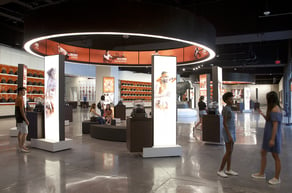 Case Study: How Creative Firm Advent Streamlined Client Approval for Large-Scale Sports Facilities
Case Study: How Creative Firm Advent Streamlined Client Approval for Large-Scale Sports Facilities
Learn how the design firm simplified collaboration with large athletic departments at major college.
Read story
Marketing agencies
In any agency environment, resource management is a basic requirement of success. Agencies, as service businesses, cannot afford any wasted time. For marketing agencies, creative operations ensures proper resource allocation not just with time management, but by mapping tools and processes across the creative workflow.
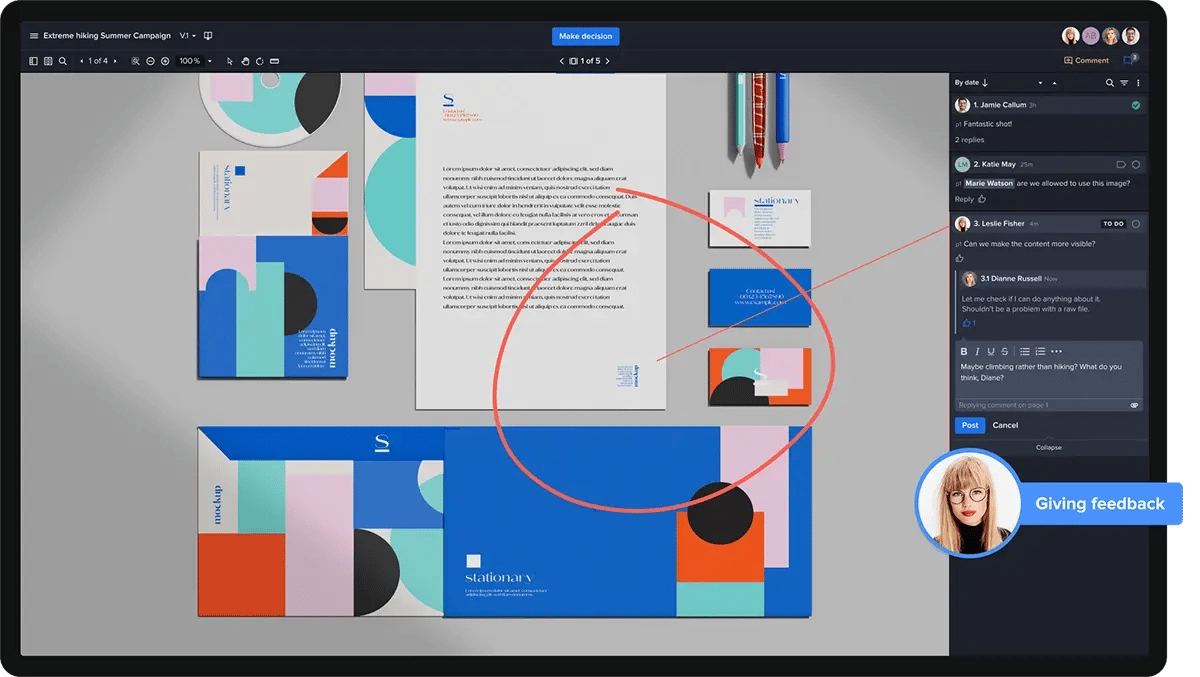
Manufacturing
In manufacturing, creative teams often struggle with collaboration across complex, technical projects. Gathering feedback from stakeholders across the organization becomes more difficult in this technical environment.
Creative operations helps team members communicate and collaborate effectively not only by incorporating online proofing tools, but by mapping those tools onto quality control processes as part of the creative ops implementation.
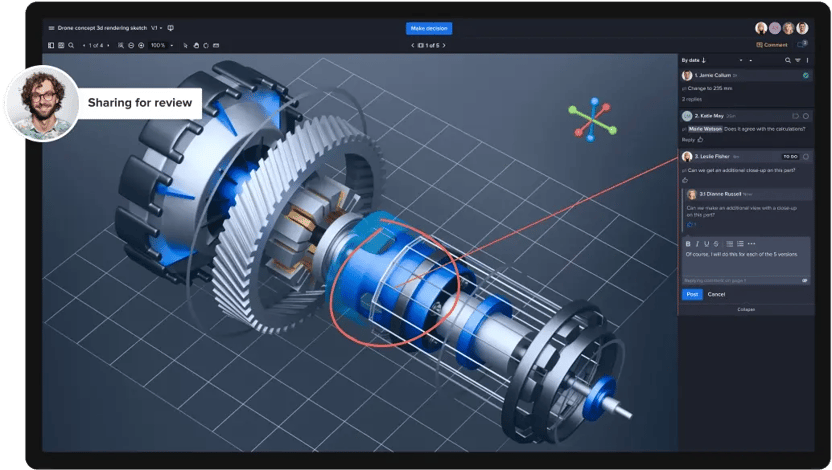
Retail
Perhaps nowhere more than retail has the demand for creative content exploded. Every marketing channel and every screen now demands a retail presence. Creative operations helps creative teams at retail companies deliver assets for every campaign while also guaranteeing brand guidelines are met. Creative ops makes sure that brands can compete on both creative content volume and quality.
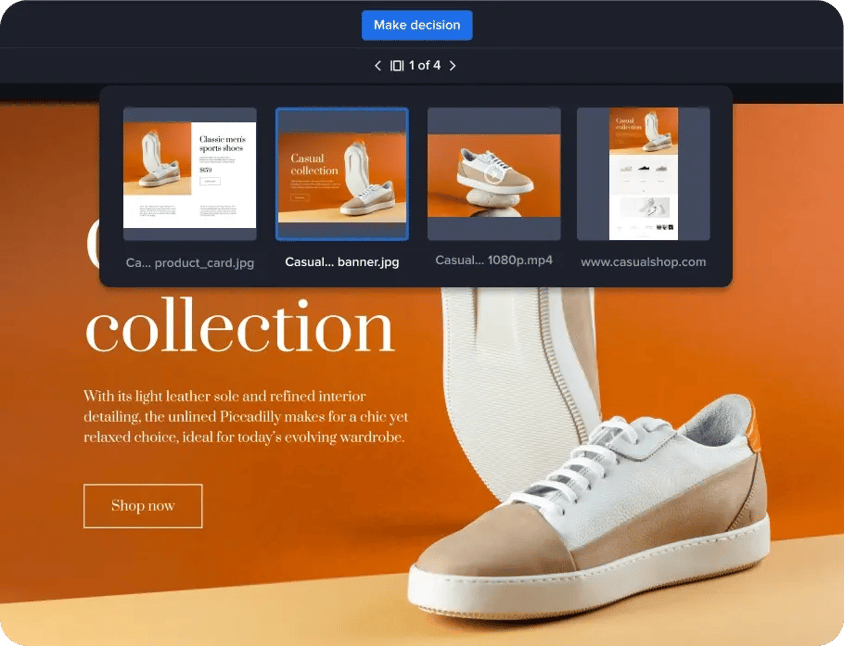
Financial services
Creative operations helps financial services companies navigate complex compliance requirements and regulatory standards. Creative teams must account for these requirements throughout each stage of the process, not just during review and approval, by implementing the right tools at the right times. Financial services brands rely on trust and transparency, even in their creative assets, and missing the mark on compliance represents a massive risk to the brand. Creative ops helps teams manage that risk.
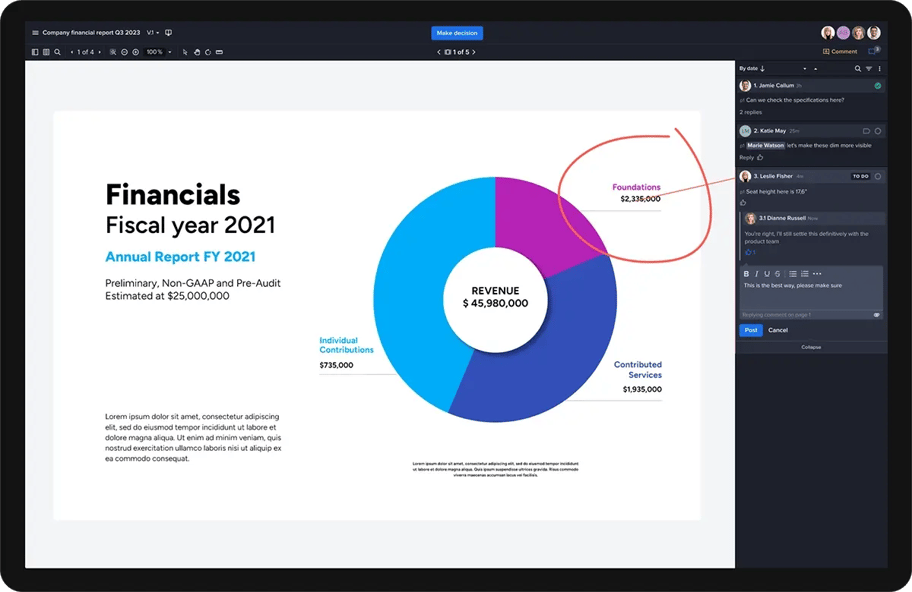
Healthcare
In the healthcare industry, compliance is more than just adhering to brand guidelines. Quality control for creative assets associated with, for example, pharmaceuticals or medical devices means legal review. Teams must account for that review in the process before starting a creative project. Tools need to integrate across project stages so that stakeholders can communicate effectively. Without setting up creative ops, each of these stages happens in a silo, increasing the risk to the business.

How Ziflow optimizes creative operations workflows
We’re biased (just like everyone else who talks about their own tools), but implementing creative operations requires Ziflow.
Ziflow is an all-in-one solution that allows creative teams to seamlessly collaborate, centralize their creative assets, and expedite the review process. This leads to increased efficiency and the delivery of top-notch creative content.
Here’s how we do it:
Centralized creative feedback
Ziflow’s centralized platform for creative feedback streamlines the process of sharing assets, collecting feedback, and managing approvals. It also eliminates the need for multiple tools and channels, such as emails and chats. Everyone is on the same page throughout the creative process.
Improved collaboration
With Ziflow’s real-time commenting and annotation tools, team members and stakeholders can provide feedback directly on assets. This leads to more efficient communication and a collaborative environment.
Ziflow's discussions and notifications features ensure everyone stays engaged and informed.
Process standardization and workflow optimization
Ziflow's Process Standardization and Workflow Optimization tools help creative teams implement standardized processes. This ensures consistency and efficiency in every project and enhances team performance.
Creative teams can easily streamline operations, reduce errors, and maintain a uniform approach to creative processes.
Higher creative quality
An organized and focused creative team leads to improved quality in all project outcomes. By using a tool like Ziflow, your team can concentrate on creative tasks, while other processes are monitored and automated by Ziflow. This means less tedious administrative tasks and more focus on quality results.
Structured version management
Ziflow's structured version management reduces inefficiency and costs by automating processes, such as handling multiple versions of assets. This ensures teams can easily track and access different project versions, eliminating confusion and saving time.
Automated update requests and reporting
Ziflow's Automated Update Requests and Reporting feature offers a streamlined system that reduces manual follow-ups and simplifies the reporting process. This automation is a major advantage. It frees up creative teams from the time-consuming tasks of chasing updates and compiling reports.
Maximum operational efficiency for increased profits and reduced costs
With Ziflow, creative operations teams can standardize and streamline creative processes. Process standardization reduces costs and speeds up the delivery of profitable, high-quality client work. This means increased profit, reduced costs, a more proactive team, and happier clients.
Integrating with other productivity and project management tools
A seamless workflow means integrating with other project management tools. Ziflow offers top-of-the-line integration capabilities that allow teams to connect with their existing tech stack. Everything from project management to asset storage is streamlined and synchronized.
By connecting with tools like Asana, Trello, Slack, and Google Drive, Ziflow enhances collaboration, communication, and efficiency across the creative team.
How do you measure the success of creative operations?
Measuring the success of creative operations involves evaluating key metrics across the discipline. It’s not enough to assume creative operations is working (indeed, it would go against the discipline to make that assumption). Creative teams need to measure their success first so that they can continue to iterate and improve — but also so they can conclusively demonstrate that their output and quality meet standards.
Here are some essential metrics to consider:
Project delivery metrics
Project delivery metrics look specifically at speed and cost of finished projects. Because they look at the project after completion, these metrics offer a clear view (if a lagging indicator) of how well projects are planned, managed, and executed:
- On-time delivery rate reflects the percentage of projects completed on or before the deadline. This is a barometer for effective project management.
- Budget adherence measures the extent to which projects stay within their allocated budgets. It provides insights into financial efficiency and resource management.
Productivity and efficiency metrics
Productivity and efficiency metrics help assess the effectiveness of creative operations.
- Throughput is the volume of projects or creative assets generated within a specific timeframe. It offers insights into overall productivity.
- Turnaround time is the duration from project initiation to completion, which helps you understand the efficiency of the creative process.
Tracking these metrics provides data on productivity from project to project.
Quality metrics
Quality metrics help you evaluate the impact of creative ops on the overall output.
- The revision rate is the average number of revisions per project. A lower revision rate often means higher quality work.
- Stakeholder satisfaction, gauged through feedback, provides valuable insights into the quality of creative projects. Feedback can be gathered through surveys, interviews, or informal discussions and offers a closer look at a project's success in meeting expectations.
Resource utilization
Resource utilization in creative operations involves two key aspects.
- Capacity utilization assesses the extent to which the creative team's capacity is being used efficiently. It provides insights into whether the team is overworked or underutilized.
- Resource allocation efficiency evaluates how effectively resources are being used. Optimal allocation means tasks are distributed efficiently, maximizing productivity while preventing burnout among teams.
Team and stakeholder engagement
Team and stakeholder engagement are crucial aspects of successful creative operations.
- Employee satisfaction gauges the level of contentment among team members with their work environment. High employee satisfaction means improved retention rates and more effective collaboration.
- Stakeholder engagement measures the involvement and satisfaction of stakeholders, including marketing teams, clients, or partners. Engaged stakeholders are more likely to provide valuable input, leading to better-aligned projects.
Learn more about optimizing and improving your creative operations processes
Incorporating effective creative operations practices changes the way creative teams work, promoting efficiency, collaboration, and quality across projects. From streamlined feedback processes to optimized workflows, creative operations empower teams to deliver exceptional results.
Ziflow stands out as a key tool in this journey, offering centralized feedback, improved communication, and standardized processes.



